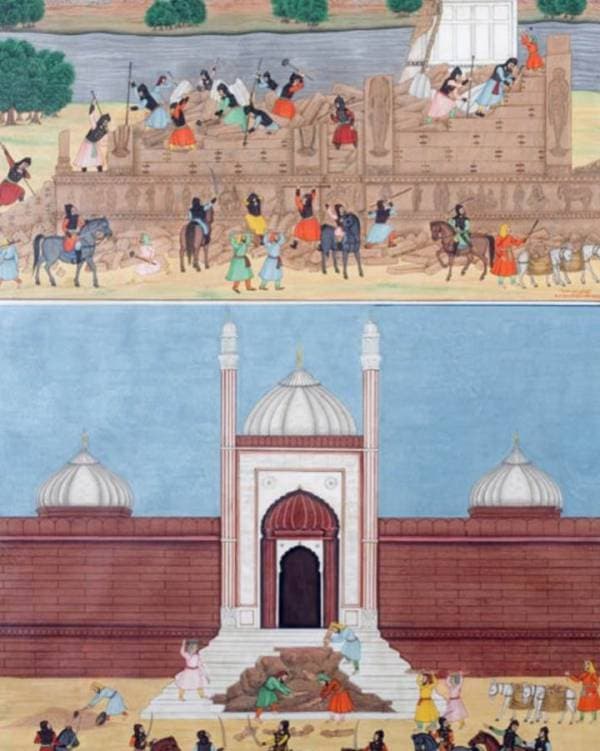Mathura

A Mughal painting depicts the destruction of the Krishna Janmasthan (birthplace of Krishna) temple at Mathura.
After the destruction of the temple, the Murti (idol) of Lord Krishna was taken and placed in the footsteps of the royal Jahanara Begum Mosque in Agra for the devout Muslims to continually trod the idol with their feet (also depicted in the painting).
The great Temple of Krishna at Mathura was built by Bir Singh Deo Bundela at the site believed to be the birthplace of Krishna at a cost of thirty-three lakhs of rupees. It was one of the most magnificent temples ever built in India and enjoyed the veneration of the Hindus throughout the land.
It was demolished in the month of Ramzan, 1080 A.H. (13th January – 11th February 1670) by Aurangzeb’s order. “In a short time, by the great exertion of the officers, the destruction of this strong foundation of infidelity was accomplished and on its site, a lofty mosque was built at the expenditure of a large sum.” To the author of Maasir-i-‘Alamigiri, the accomplishment of this “seemingly impossible work was an “instance of the strength of the Emperor’s faith.” Even more disgraceful was transporting the idols to Agra and burying them under the steps of the mosque of the Begum Sahib “in order to be continually trodden upon.” Aurangzeb even changed the name of the sacred city of Mathura to “Islamabad”. Today, a mosque occupies the place of Krishna Janmabhoomi temple. But a new temple has been erected post-independence in the immediate vicinity of the mosque.
Source:
- https://trueindologytwitter.wordpress.com/2020/03/26/destruction-of-the-krishna-janmasthan-temple/
- Maasir-I-Alamgiri of Aurangzeb’s court historian Saqi Mustad Khan. Translated by Jadunath Sarkar(1947). Page 60 of the said book.